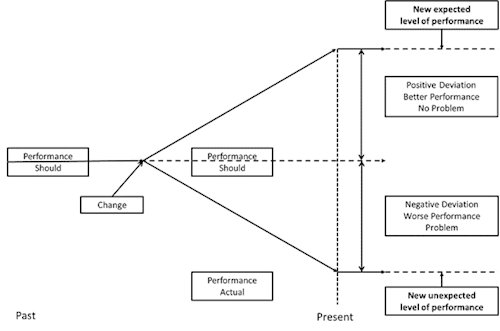Home > Blog
Read Time — 7 minutes
Part 1: The Seven Truths of Problem Solving

Problems. Everyone seems to have them. Every process or system will eventually develop a problem. The speed and efficacy with which a problem is solved depends largely on the skills of the people assigned to fix it. The reliability of their problem solving strategies correlates to how well they systematically investigate and analyze a problem for its root cause.
Here is the dilemma for many organizations: their personnel are typically untrained in applying the appropriate problem-solving skills for a particular problem. Often, they treat the symptoms rather than exposing and addressing the problem’s underlying cause. The result is that the problem never goes away; it simply becomes latent.
This misdirection is especially evident in typical manufacturing maintenance troubleshooting efforts, which results in extended periods of equipment downtime. This certainly isn’t for lack of intelligence or effort. Problems persist because many companies fail to provide adequate troubleshooting training for their personnel.
Understanding problems: problems vs. deviation in manufacturing production
One reason people have difficulty solving a problem is that they truly don’t understand its nature. That may be because someone without direct ownership of or involvement with the problem is charged with finding a solution. Understanding why an issue is considered a problem is one of the first steps in solving it. This understanding helps create an appropriate sense of urgency for both the organization and the problem-solvers assigned to it. So just what is a problem?
Kepner and Tregoe define problems as deviations from expected performance. In [2] The New Rational Manager[1], they present a simple model to illustrate the structure of a problem as shown in the figure below. The authors explain that “a performance standard is achieved when all conditions required for acceptable performance are operating as they should.” This is true for everything in the work environment including people, systems, equipment and departments.
Their model tells us that a stable level of performance should be occurring before a change takes place and a new level of performance is observed. The difference between the old and new performance levels is a deviation. So is this deviation referred to as a problem?

In order for a deviation to be classified as a problem, it must satisfy one or more of the following three requirements:
1. The deviation must be perceived as a detriment to the organization. It must diminish production, quality, safety, or another factor. The result could be customer dissatisfaction, a delivery shortfall, loss in revenue, throughput issue, injury or any other detrimental outcome.
2. The cause of the deviation is unknown. The root cause is not immediately established using the “normal” problem-solving techniques, which causes the change in performance to linger. If the cause isn’t known, the solution cannot be known either.
3. The root cause and the solution are both known, but the solution can’t be implemented because doing so would either cost too much or take too long. As pressure mounts to get the problem fixed, the symptoms get treated or another “quick fix” is found. In turn, this creates a prolonged episode of the problem.
If the root cause and the solution are known, and implementing the solution doesn’t take too long and/or cost too much, then the deviation never develops into a problem. Many deviations never become problems, but when the critical factors of cost, time, and lost revenues begin to mount, that is when deviations become problems.

What if an organization considers a deviation to be beneficial? For instance, a change may occur that results in improved safety, quality, production, or revenue. Is it still considered a problem? Yes. When a positive deviation returns to its previously acceptable level of performance (and it will if we don’t address and identify the root cause), the organization will perceive the change as problematic. Therefore, it is imperative that ALL deviations get investigated for root cause with the same scrutiny. In other words, all changes in performance (i.e. deviations) have the potential to become problems. The figure above describes both negative and positive deviations.
We have now arrived at two problem solving truths:
- Truth 1: A problem is the direct result of a change that occurred prior to a new performance level.
- Truth 2: A deviation in performance becomes a problem when one of these conditions applies: 1) it adversely affects the organization, 2) the root cause is unknown, or 3) it costs too much or takes too much time to fix.
The psychology of teaching problem-solving skills for manufacturing processes
Now, let’s explore some lean problem-solving skills and why it is imperative to employ a structured approach to solving problems. As we all know, most people feel a sense of excitement when they solve a problem. When people feel excited following their accomplishments, their brains release endorphins which produce a natural “high.”
So, if people feel so satisfied when they solve problems, why do so many seek to avoid problem-solving challenges in the first place? [1] Kepner and Tregoe tell us that the answer depends on the presence of one or more of the following four conditions:
- People lack the right problem-solving skills.
- People haven’t experienced prior problem-solving success.
- People haven’t been positively reinforced when they have successfully solved problems.
- People are afraid to fail.
Problem solving need not be a difficult, time-consuming ordeal, but negative conditioning leads to this common perception. Often people take repeated stabs at a problem, hoping to luck into finding the root cause and a solution. If they don’t succeed after a few repetitions, they often quit, discouraged.
Luck plays a major role in problem solving, but the luck I am referring to is Laboring Under Correct Knowledge, or L.U.C.K.! Counter-intuitively, this is a structured, systematic approach. A structured approach will:
- Reduce the probability of overlooking key factors.
- Necessitate understanding the basic process with the problem.
- Discourage reliance on hunches, intuition, pre-conceptions of the problem.
- Increase the probability that the root cause(s) of the problem will be found.
- Result in demonstrably workable solutions.
Contrary to popular belief, problem-solving success does not result from superior knowledge. It certainly helps to understand the process, as well as the problem, but total knowledge of the object experiencing the problem is not a prerequisite for solving it. What matters is using the right tools effectively.
A systematic approach to problem solving will succeed only if such an approach is established as the organizational norm. Shifting problem-solving expectations is just as important as teaching and learning new skills. In order to upgrade problem-solving in any organization, one of the first steps that must be taken is to establish the expectation that uncovering root causes is task #1.
Here are five new truths to add to the first two about problem solving:
- Truth 3: Systematic methods may appear time-consuming, but take less time than the “change something and see what happens” approach.
- Truth 4: Problem-solving success is not the result of superior knowledge.
- Truth 5: Structured approaches to solving problems will only succeed if they are established as the organizational norm.
- Truth 6: Today’s solutions could develop into tomorrow’s problems if the right questions aren’t asked.
- Truth 7: Today’s problems are often yesterday’s solutions, implemented without data.
In the next post, we will continue our series with a discussion about the basic elements of a logical pathway of solving problems for manufacturing processes.



